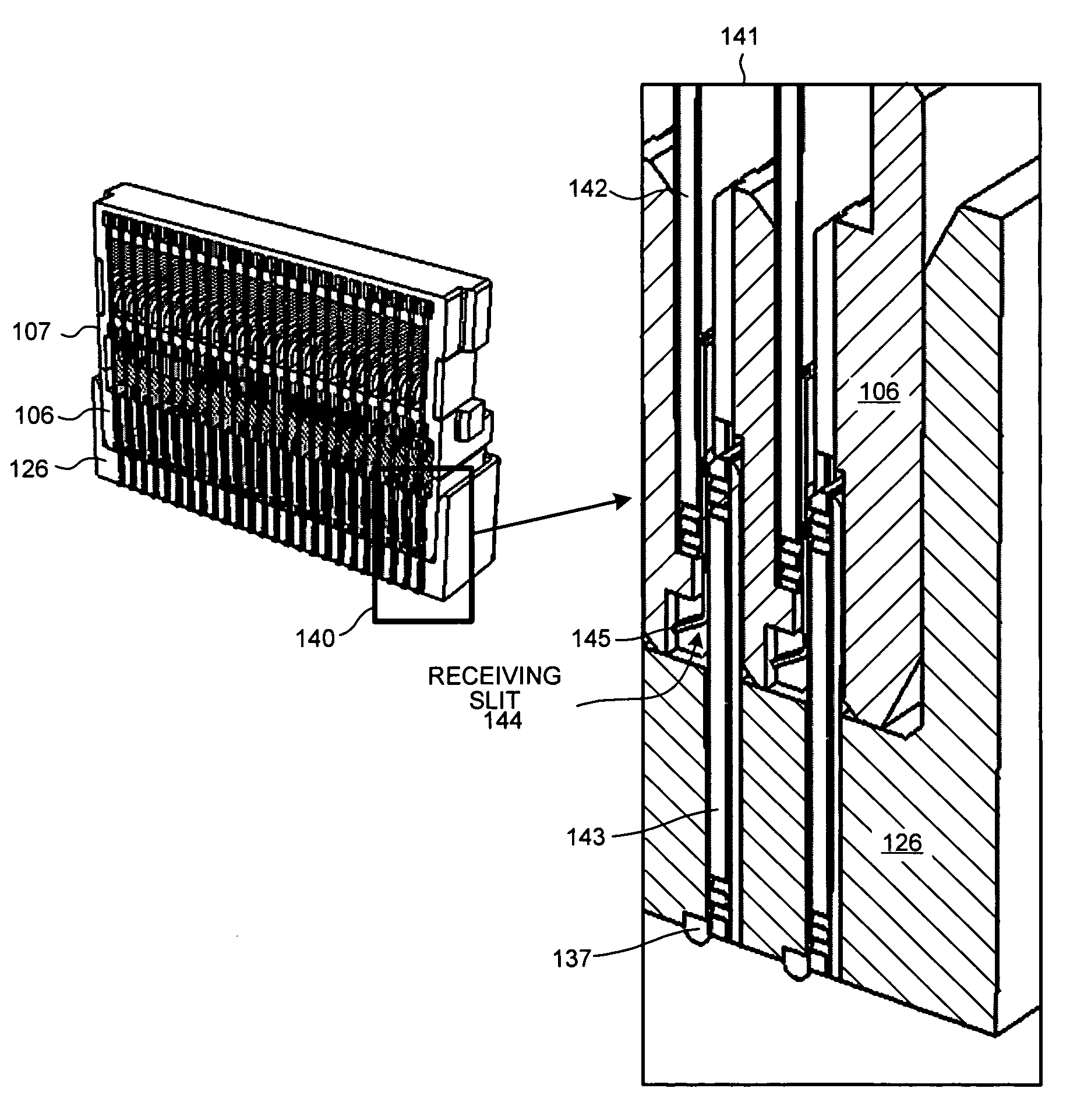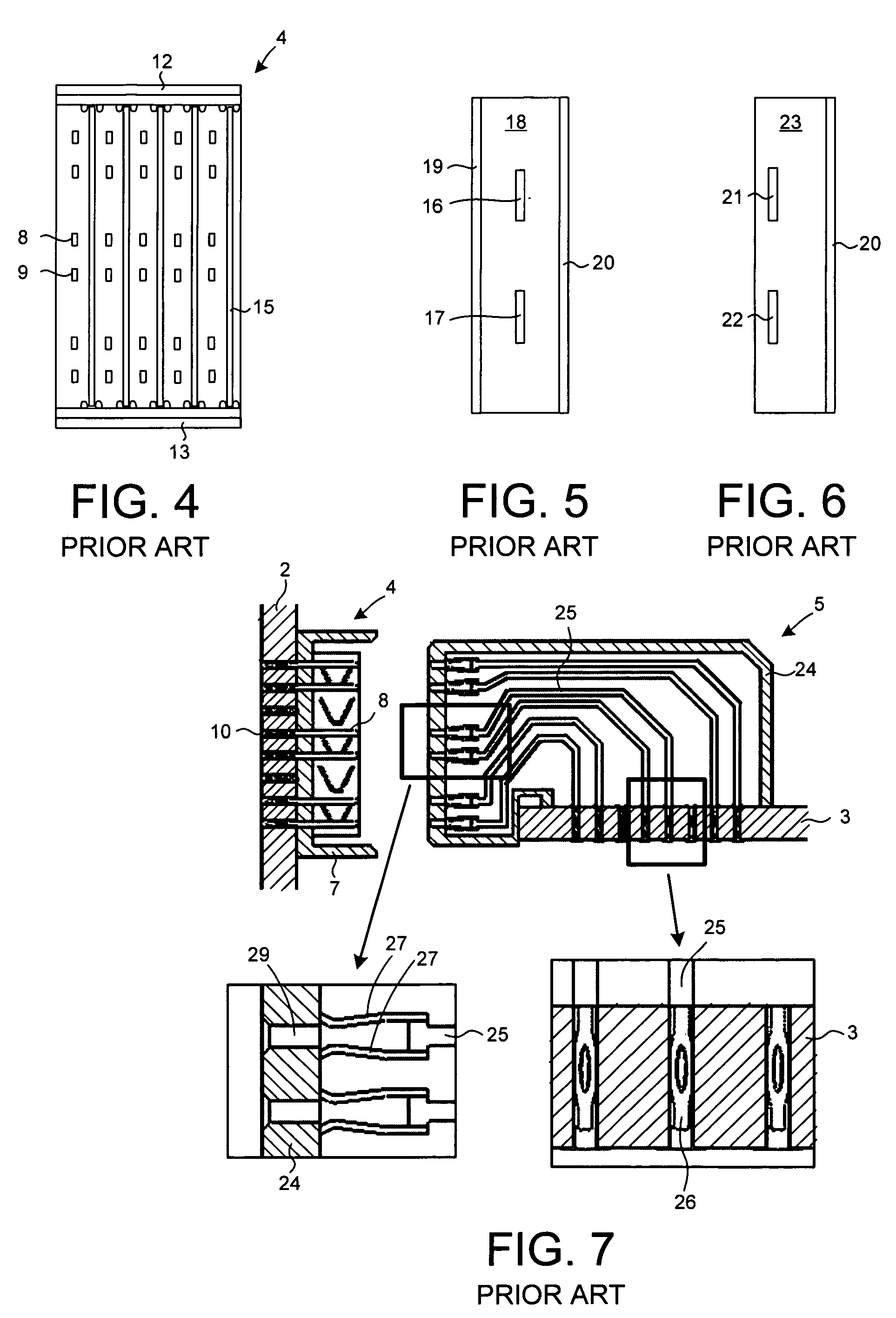High speed connector assembly with laterally displaceable head portion
a connector and assembly technology, applied in the direction of connection contact member material, two-part coupling device, connection device connection, etc., can solve the problems of significant mismatch between connectors of each connector assembly, misalignment giving rise to mechanical stress between the connectors and printed circuit boards, and increase the difficulty of noise-free communication of electrical signals, so as to reduce the damage of surface mount connector-to-printed circuit board connections, prevent the transfer of stress, and reduce the effect of stress
- Summary
- Abstract
- Description
- Claims
- Application Information
AI Technical Summary
Benefits of technology
Problems solved by technology
Method used
Image
Examples
Embodiment Construction
[0069]Reference will now be made in detail to some embodiments of the invention, examples of which are illustrated in the accompanying drawings.
[0070]FIG. 14 is a perspective view of a right angle connector assembly 100 in accordance with one novel embodiment. Connector assembly 100 includes a first connector 101 and a second connector 102. First connector 101 may, for example, be attached to a motherboard printed circuit board whereas second connector 102 may be attached to a daughterboard printed circuit board. First connector 101 is therefore hereinafter referred to as a motherboard connector and second connector 102 is hereinafter referred to as a daughterboard connector. To couple the two connectors 101 and 102 together, the second connector 102 may be moved in the direction of arrow 103 with respect to connector 101.
[0071]FIG. 15 is a perspective view of daughterboard connector 102. Ribs 104 of connector 102 slidingly engage corresponding guide groves 105 in connector 101 when...
PUM
 Login to View More
Login to View More Abstract
Description
Claims
Application Information
 Login to View More
Login to View More - R&D
- Intellectual Property
- Life Sciences
- Materials
- Tech Scout
- Unparalleled Data Quality
- Higher Quality Content
- 60% Fewer Hallucinations
Browse by: Latest US Patents, China's latest patents, Technical Efficacy Thesaurus, Application Domain, Technology Topic, Popular Technical Reports.
© 2025 PatSnap. All rights reserved.Legal|Privacy policy|Modern Slavery Act Transparency Statement|Sitemap|About US| Contact US: help@patsnap.com



